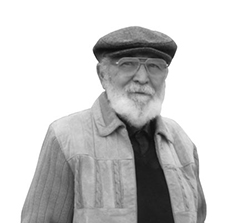
Cuban painter Viredo Espinosa leaves legacy
 This post was written by OC Latino Link intern Amber Amaya:
This post was written by OC Latino Link intern Amber Amaya:
Cuban artist Viredo Espinosa passed away of natural causes in Costa Mesa on Sunday, Aug. 26.
He was 83.
Born in 1928 in Regla, a small town across the bay from Havana, Espinosa (who would use only his first name as an artist) grew up in a multi-ethnic neighborhood known for its rich Afro-Cuban culture.
Viredo became interested in art at an early age. He began formal art studies as an adolescent in several academies and art schools in Havana, eventually becoming inspired by the work of Wifredo Lam, one of the best known artists of the first generation of Cuban modernists.
Viredo came to devote himself deeply to his own artistic production.
In the 1950s, Viredo’s work became known when he joined the Group of the Eleven, a community of painters and sculptors who introduced an international style of Cuban art at mid century, characterized by abstract and non figurative painting.
In 2003, Viredo and his wife Alicia were in Miami for the 50th anniversary of the Group of Eleven. According to Viredo’s longtime friend, Mariano Sanchez, the artist was moved by the amount of attendees who showed up for the event.
Sanchez, whose friendship with Viredo spanned 20 years, described the artist as a very kind and humble man. He said Viredo loved listening to classical music while he painted.
“Even when he was painting his African themes he would love to play classical music in the background. It was his passion,” said Sanchez. “He loved it just as much, I think, as his painting.”
In addition to his artistic success, Viredo produced murals, commercial work that would continue to provide a stable income for the next few years.
His commissions eventually included numerous public buildings, restaurants, and private residences in Havana.
Viredo left Cuba for the United States in 1969 and settled in the Los Angeles area where he worked initially in mural commissions.
By 1977, his financial situation allowed him to again take up painting full time.
Much of Viredo’s later art was based on his childhood interaction with a mixed cultural background that included traditional African-derived religions, Spiritism, and Catholicism.
Sanchez described the immense love Viredo had for his art.
“If you asked him which one was his favorite he would’ve said all of them,” said Sanchez. “It would be like asking a parent which child he prefers. He loved them all.”
Some of Viredo’s paintings featuring the orishas of the Santeria religion were featured in the Los Angeles Museum of African American Art and by the Smithsonian Institution’s “Latin Jazz: The Perfect Combination” exhibit, which traveled to 12 cities in the U.S. and showed in Los Angeles in 2005.
Viredo is survived by his wife of 57 years Alicia, his sister Noigma, nephews Alexis and John Henry, and niece Maria Elsa.
